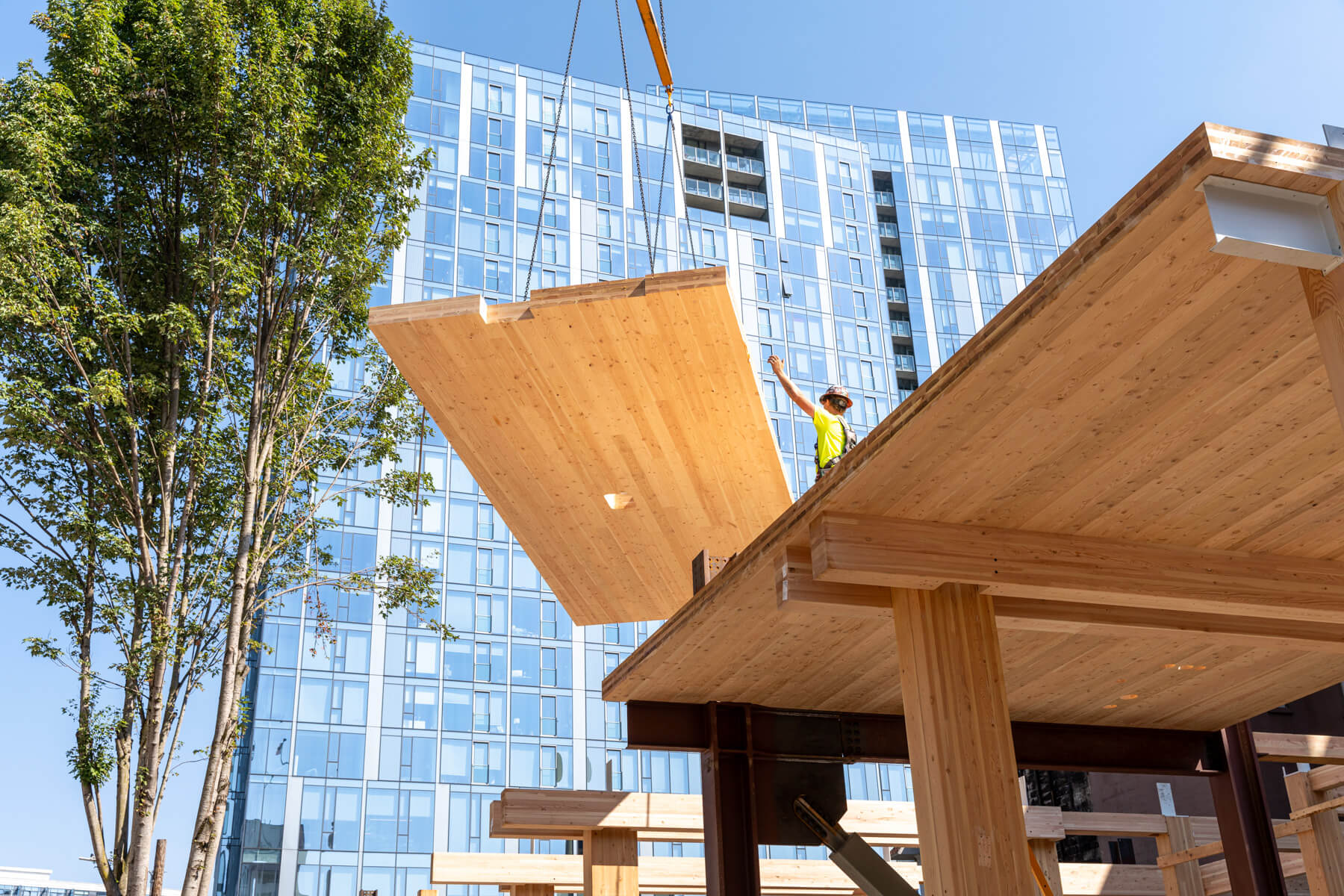Rising 12 stories above Downtown Portland, Julia West House is Oregon’s tallest mass timber building and acts as a new benchmark for supportive housing. Designed by Holst Architecture and developed by Community Development Partners (CDP), the 56,000-square-foot development replaces an underutilized lot sold by a local church with 90 fully furnished apartments, 60 studios and 30 one-bedroom units, for households earning 30 percent or less of the area median income. The building works to integrate natural materials, lights, and communal space alongside supportive services provided by Northwest Pilot Project (NWPP), Native American Rehabilitation Association of the Northwest (NARA NW), Community for Positive Aging (CfPA), and Lift Urban Portland.
“What we love about this business is that we’re able to focus on what we’re passionate about, bringing in some of those climate-forward elements and trying to be progressive on sustainability and design,” said Eric Paine, CEO of CDP. “This was a really exciting project to use a brand-new-to-us construction typology in mass timber, and a high-rise. It was the first time we had used cross-laminated timber in a multi-story building, and it was the tallest building that CDP has ever developed.”
Julia West House employs type IV-B mass timber construction, glulam columns, and wood ceilings left exposed to create warmth and visual connection to the Pacific Northwest’s natural ecology. The wood is complemented by a gray masonry facade. Communal areas were expressed through large carve-outs in the building’s massing, connected by a basalt-like crack that subtly articulates the facade.
“From an architectural perspective, there’s a huge benefit to using wood on the interior to provide a connection with nature that’s visible and beautiful, especially for affordable housing,” said Nici Stauffer, project architect at Holst Architecture. “We feel strongly about that, in terms of providing beauty, quality, and a better experience for the residents.”

Julia West House responds to Portland’s housing crisis, where nearly a quarter of the houseless population is aged 55 and older and BIPOC individuals are overrepresented. Supportive services include case management, recovery programs rooted in Native American culture, and initiatives to address social determinants of health, combat isolation, and improve access to benefits.
The building also provides a rooftop patio, communal kitchen, lounge, secure bike parking, and onsite offices for property management and resident services. Funding combined public and private sources, including Low-Income Housing Tax Credits, USDA Wood Innovations funding, and Portland Clean Energy Community Benefits Fund grants.
Julia West House demonstrates how mass timber construction, combined with trauma-informed design and integrated support services, can create a highrise model for affordable housing that prioritizes resident well-being, sustainability, and urban density.
→ Continue reading at The Architect's Newspaper
